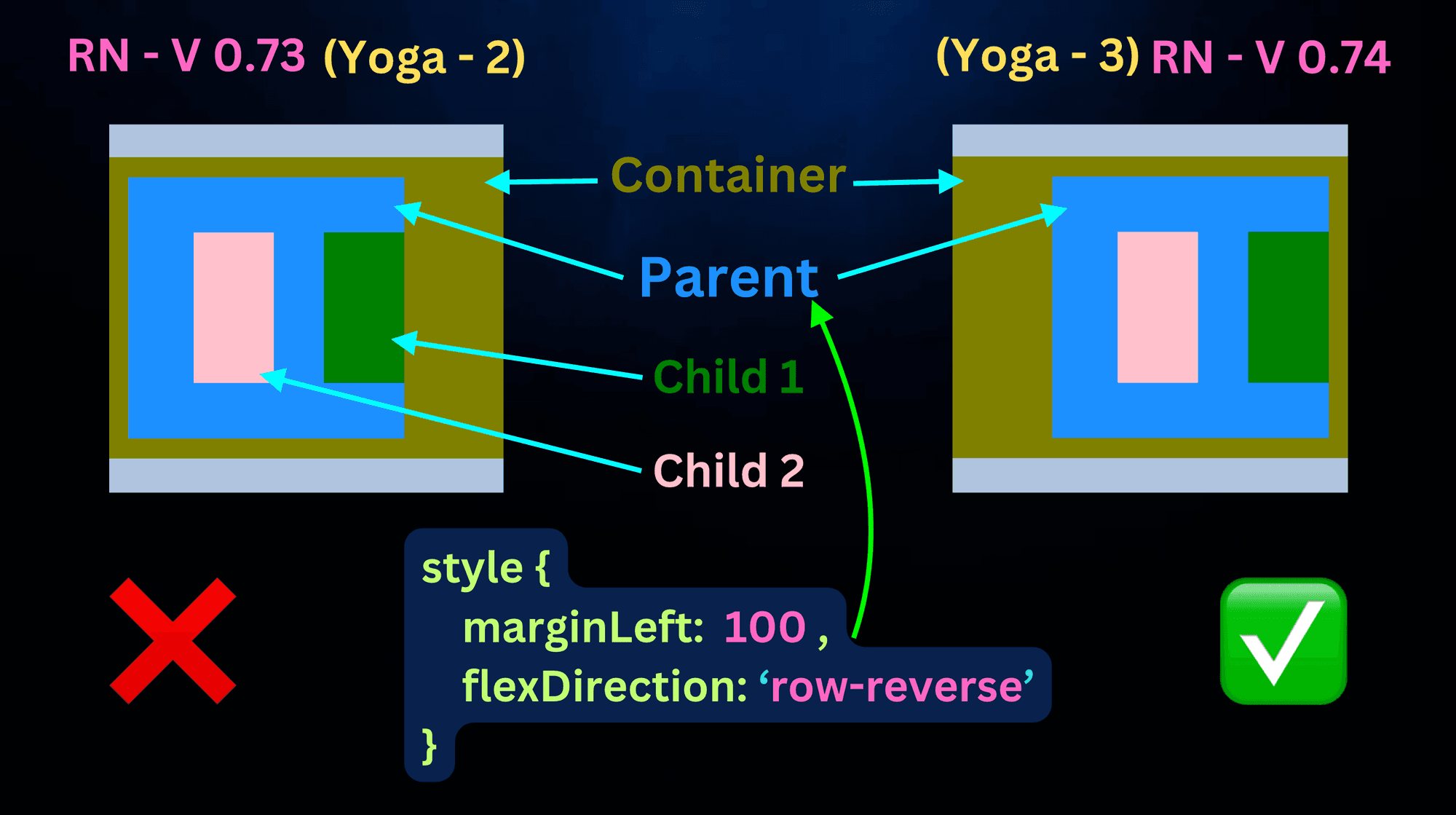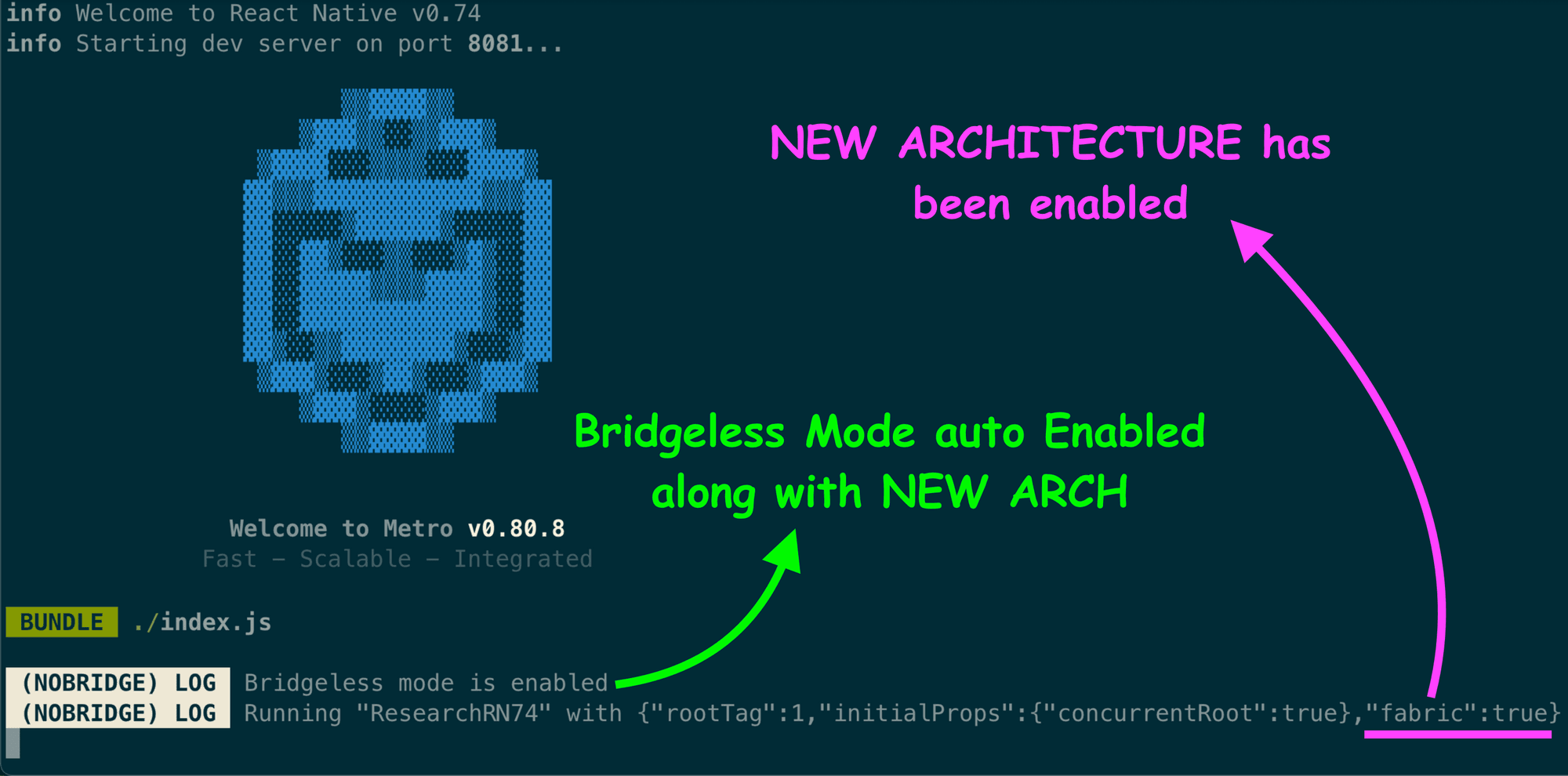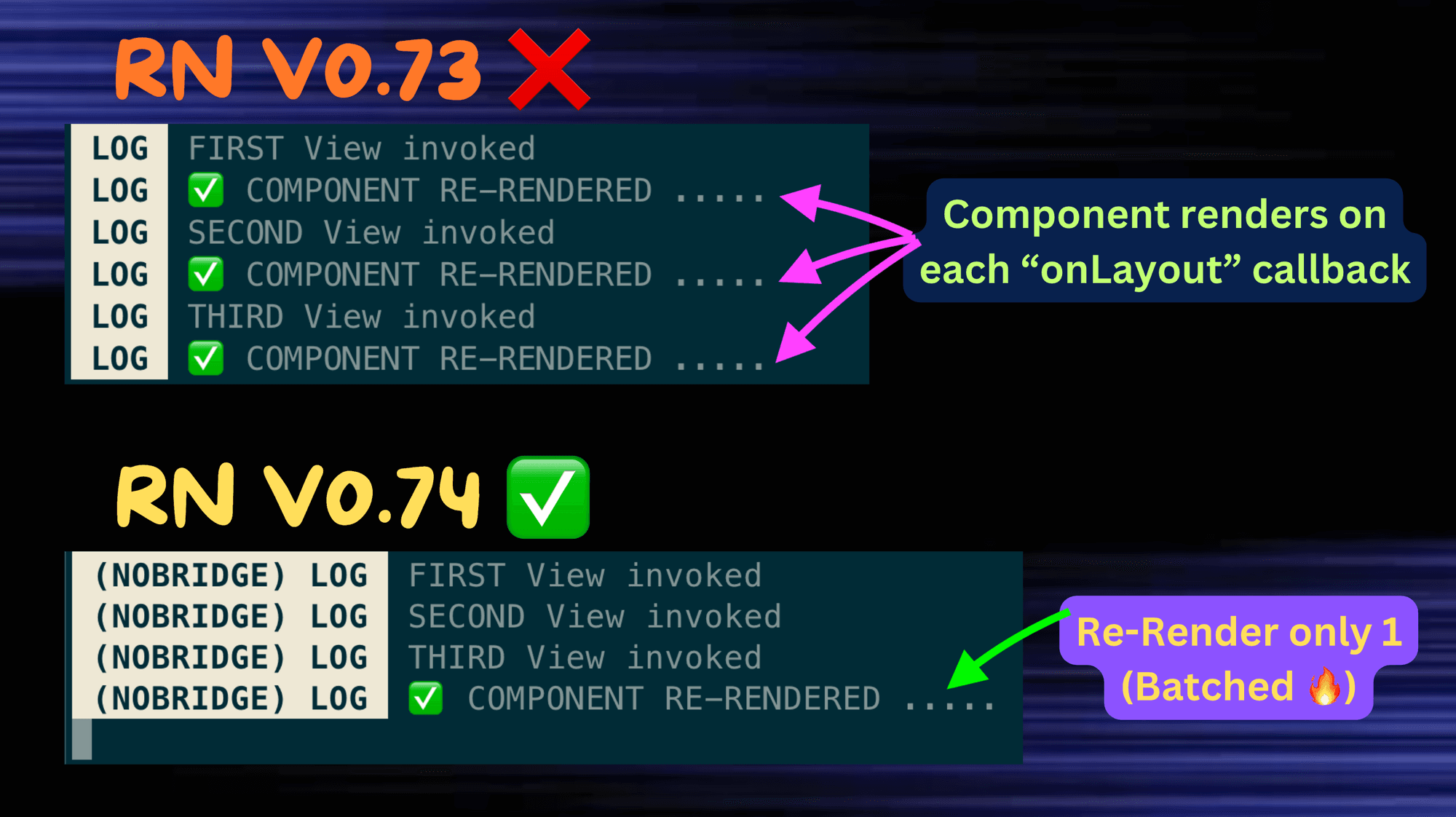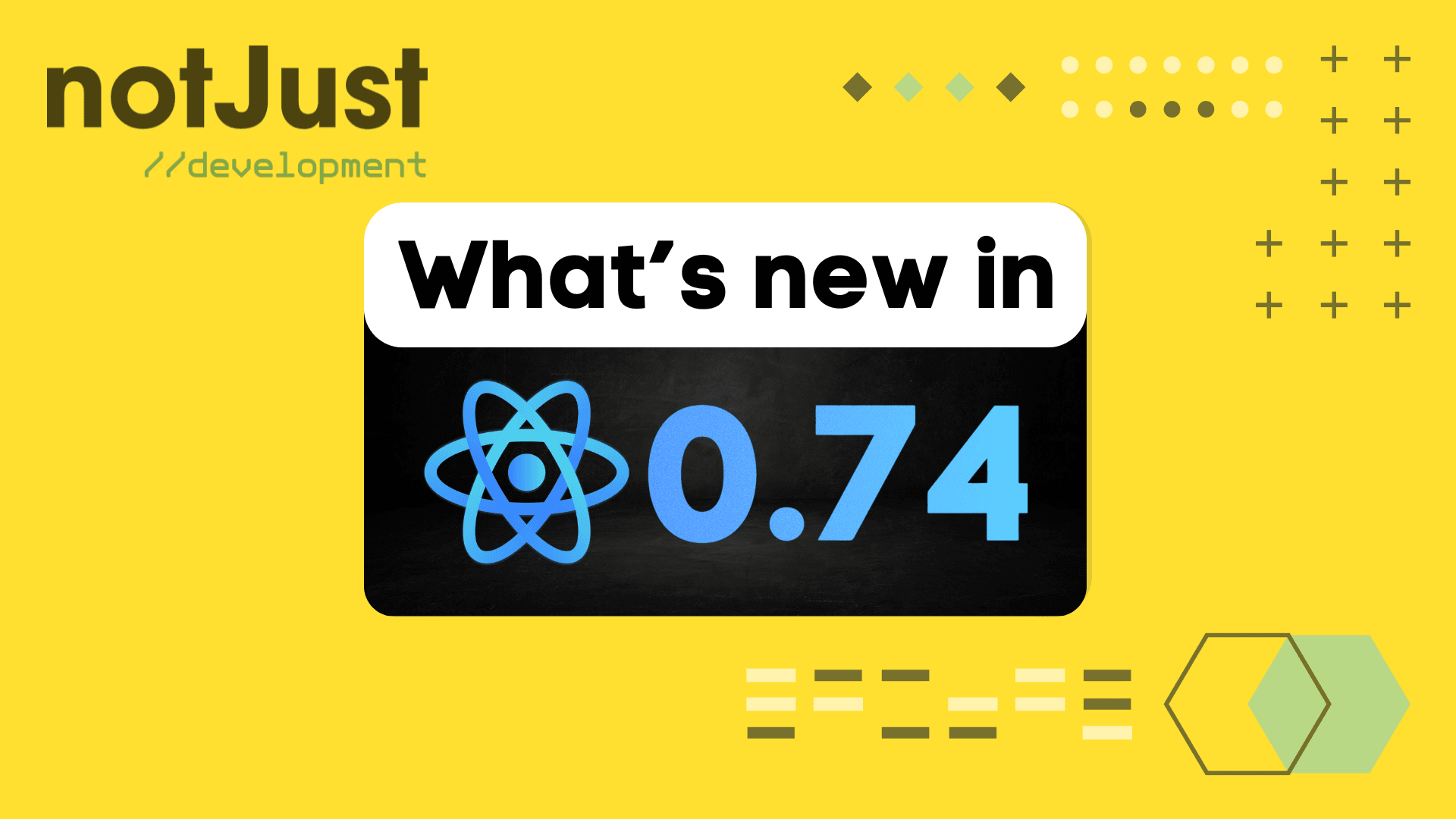Introduction
React Native V0.74 was released with over 1600 commits. The highlights are:
- Yoga 3.0
- New Architecture: Bridgeless by Default
- New Architecture: Batched onLayout Updates
- Yarn 3 for New Projects
Let’s dive into each of the new highlights.
Yoga 3.0
Let's understand first what Yoga is in React Native.
Yoga — the layout engine
Yoga is an open-source layout engine developed by Meta. The engine, which is responsible for how UI elements (such as buttons, text, images, etc.) are arranged and positioned within a user interface.
Yoga calculates these four layout properties for each UI element.
- Positioning
- Sizing
- Alignment
- Spacing
With Yoga, you can create responsive layouts that adapt to different screen sizes and orientations. It also implements a widely used concept called CSS Flexbox in React Native. So you already feel that yoga is the heart (♥︎) of React Native flexible UI.
Yoga 3.0 — what’s new?
In all previous versions of React Native, there were some incorrect layout behaviors. With the introduction of Yoga 3.0, several improvements were made. One of the most common issues was that the ‘row-reverse’ style was not functioning properly.
Let’s look at the image below where the left one is from V0.73 and the right one is from V0.74.

In the above image, we have a <Container/>, then inside it a <Parent/> component, then inside two <Child/> components.
We then applied this style in the <Parent/> component.
// Style for <Parent/> componentstyle={{flexDirection: 'row-reverse',backgroundColor: 'dodgerblue',flex: 1,marginLeft: 100,marginRight: 20,marginVertical: 20,alignItems: 'center'}}
Did you notice, that we added a marginLeft of 100 pixels for <Parent/>?
- Yeah, but see the output in React Native V0.73 (the left one) from the above image. It shows a 100 pixels margin on the right (not on the left)!!
- Okay, now let’s see the output of React Native V0.74 (the right one). Great, in V0.74 we see a perfect 100-pixel margin at left, and also two <Child/> components got reversed 🚀
So, in Yoga-2, if you apply a ‘row-reverse’ flex-direction with "margin" or "padding" or "border" in a component then the edges of that component also get flipped. But in Yoga-3 it has been solved perfectly 💯
Yoga-3 has brought some other important styling components that were missing in Yoga-2.
- 'space-evenly' property for alignContent style
- 'static' property for position style
New Architecture: Bridgeless by Default
Old Architecture
React Native previously used a bridge to communicate between JavaScript and native modules. The Native Modules are written in C++, Objective C, Java, or kotlin to access native features like cameras, sensors, etc. Unfortunately, the Bridge has some limitations.
One main limitation is that each time one layer communicates with another, it involves serializing (converting JS Object to JSON String) and deserializing (converting JSON String back to JS Object) data. Since the conversion takes time, this process adds a performance issue to the communication flow.
New Architecture — performance booster
The good news is that the React Native team was able to replace the bridge with an interface called JSI (JavaScript Interface). It was written in C++ and it opens up all the native features available to your JS code, which means that you can call native methods without any data serialization or deserialization, making the app super fast.
Remove OLD architecture dependencies
JSI is the core part of New Architecture. To enable JSI (New Architecture) with its full power in our app, we need to first remove the app dependency from OLD bridge architecture. To do that, the React Native Team has introduced three pillars of New Architecture, which allow us to remove full dependency on the bridge.
- TurboModules: It removed the app dependency on native calls from the bridge (released on V0.68)
- Fabric Renderer: It removed the app dependency on component rendering from the bridge (released on V0.68)
- Bridgeless Mode: It removed the app dependency on everything else (i.e: the rest of the React Native runtime: error handling, global event emitters, timers, and more) from the bridge (released on V0.73)
What is new in V0.74?
From V0.74, once you enable the New Architecture, you will see that ‘Bridgeless Mode’ has been enabled automatically. However, the New Architecture itself is still not yet enabled by default.
When you enable New Architecture in your React Native app with V0.74, you will see these two lines like the below in your Metro Log:

That’s it 🚀. From React Native V0.74, you don’t need to enable Bridgeless mode manually after enabling New Architecture 💯
New Architecture: Batched onLayout Updates
Another great news is that the React Native team not only made the New Architecture Bridgeless Mode the default, but they also improved this architecture to handle batched onLayout updates (executing multiple updates in a single render). This optimization enhances performance by minimizing layout-related computations during rendering.
The "onLayout" props
The onLayout prop in React Native is used to handle layout (position) changes for a component. When the layout of a component changes (due to mounting, resizing, rotation, or other factors), the onLayout callback function is triggered.
You can use this prop like below to perform actions based on the updated layout information.
function App() {return (<ViewonLayout={() => {console.log("Component has been invoked 🚀");}}/>);}
How "onLayout" batch update works?
Assume the component <App/> is as shown below, where each View triggers an onLayout callback function when mounted.
function App() {const [state1, setState1] = useState(false);const [state2, setState2] = useState(false);const [state3, setState3] = useState(false);console.log("✅ COMPONENT RE-RENDERED .....");return (<View><ViewonLayout={() => {console.log("FIRST View invoked");setState1(true); // Update state1 when the View mounts}}></View><ViewonLayout={() => {console.log("SECOND View invoked");setState2(true); // Update state2 when the View mounts}}></View><ViewonLayout={() => {console.log("THIRD View invoked");setState3(true); // Update state3 when the View mounts}}></View></View>);}
Now, in React Native V0.73, you will see an output like below 👇

Did you notice that, on each execution of the "onLayout" callback, it re-renders the whole component? Yeah, it is not expected.
Now, let’s see the output in React Native V0.74 with enabling New Architecture 👇

Amazing performance 🔥. The component got re-rendered only once for all 3 "onLayout" callback execution.
A good summary in the below image on "onLayout" batch update 👇

Yarn 3 for New Projects
Yarn 3 is now the default JavaScript package manager for new projects initialized with React Native Community CLI. This replaces Yarn Classic (1.x), which was deprecated and previously used as the default.
Yarn 3 speeds up the process of installing and updating dependencies and optimizes how dependencies are stored.
Upgrade to V0.74
Now, it’s time to upgrade to the latest release of React Native, V0.74. Upgrade Helper is a fantastic tool that can assist you with this upgrade.
Expo SDK 51 Beta
Great news for Expo enthusiasts: React Native v0.74, with all its new features, is on the way, along with Expo SDK 51. The Expo team recently released the SDK 51 Beta just last week. According to the official announcement, the beta phase for SDK 51 will last only one week.
That’s it 🙌
React Native version 0.74 introduced significant improvements in component layout, architecture, batched onLayout updates, and integration with Yarn 3.
Did you learn something new today?
If you found this post valuable, share it with one friend or coworker that can benefit from it as well. That would be much appreciated 🙏
The post was written by Anis and edited by Vadim Savin.



